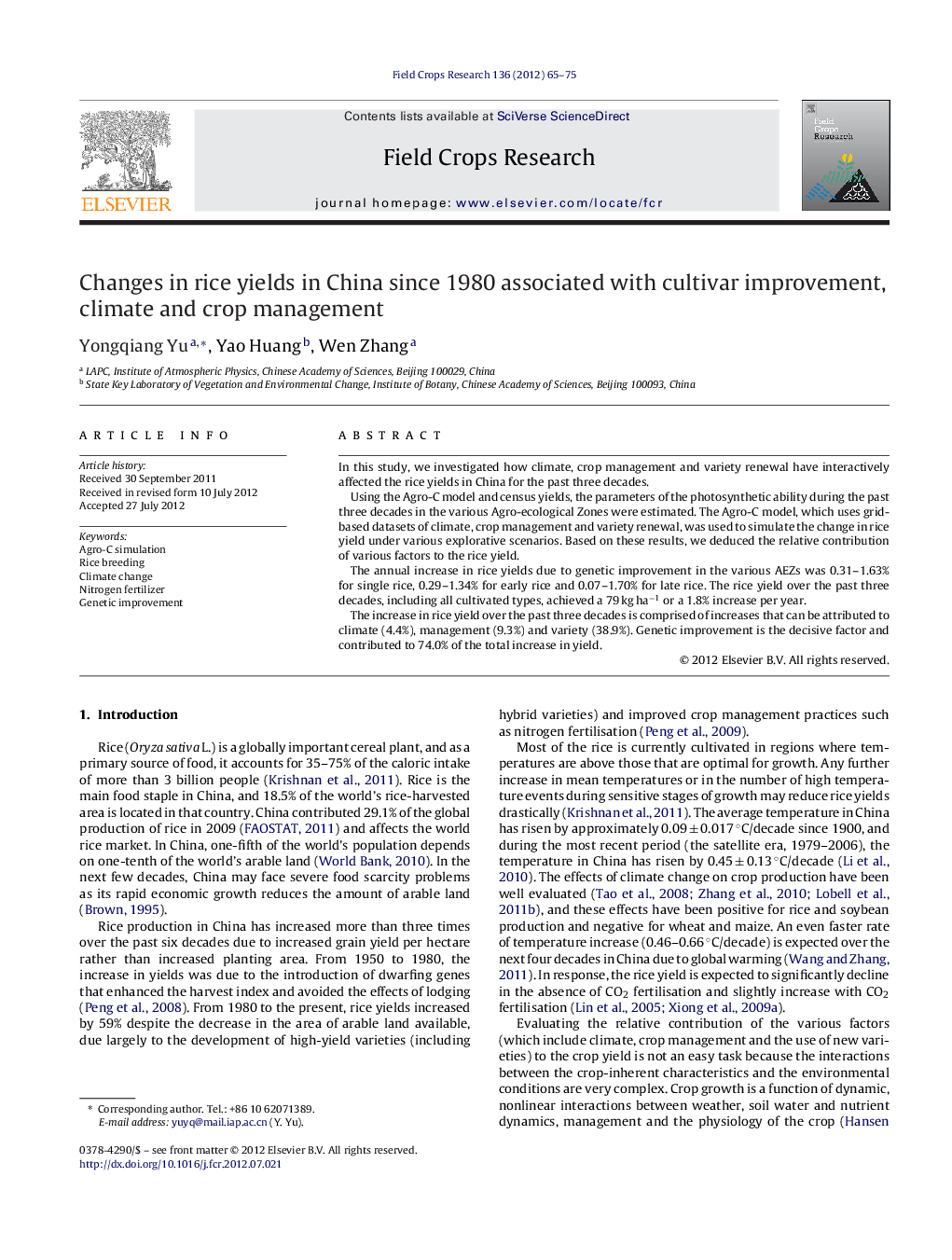| Article ID | Journal | Published Year | Pages | File Type |
|---|---|---|---|---|
| 4510398 | Field Crops Research | 2012 | 11 Pages |
In this study, we investigated how climate, crop management and variety renewal have interactively affected the rice yields in China for the past three decades.Using the Agro-C model and census yields, the parameters of the photosynthetic ability during the past three decades in the various Agro-ecological Zones were estimated. The Agro-C model, which uses grid-based datasets of climate, crop management and variety renewal, was used to simulate the change in rice yield under various explorative scenarios. Based on these results, we deduced the relative contribution of various factors to the rice yield.The annual increase in rice yields due to genetic improvement in the various AEZs was 0.31–1.63% for single rice, 0.29–1.34% for early rice and 0.07–1.70% for late rice. The rice yield over the past three decades, including all cultivated types, achieved a 79 kg ha−1 or a 1.8% increase per year.The increase in rice yield over the past three decades is comprised of increases that can be attributed to climate (4.4%), management (9.3%) and variety (38.9%). Genetic improvement is the decisive factor and contributed to 74.0% of the total increase in yield.
Graphical abstractFigure optionsDownload full-size imageDownload as PowerPoint slideHighlights► The photosynthetic parameters were calibrated by the rice census yield. ► The climate, management and variety together shaped the increase in rice yield. ► Variety renewal was the decisive factor of the increasing rice yield in China.
